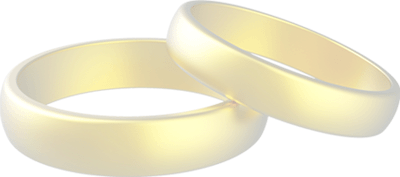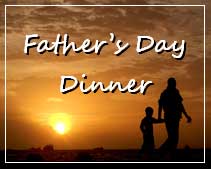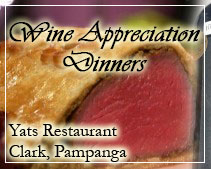Loire Wine Guide
About Wines from Loire Valley of France
Loire Wine Guide
The Loire Valley has intrinsic beauty, both in its natural landscape as well as those features, the many fine chateaux, churches and monasteries, that are the result of man’s labours. The great architectural heritage and plethora of historic towns and villages are evidence of millennia of interaction between humans and their environment, and reflect the importance of the region during the Renaissance, and its relevance to the development of modern culture. It was these characteristics that resulted in the Loire Valley, specifically the section from Sully-sur-Loire to Chalonnes, being designated a UNESCO World Heritage site in 2000.
On a more personal level, the Loire Valley is a very special place. It is the source of a varied selection of wines of interest, many of which I experienced first hand on my first ever dedicated wine trip, travelling from Angers to Sancerre, stopping off at most of the significant appellations along the way. Not only did I learn a lot about the wine and the people that brought it into being, but I laid down many great memories, sufficient stimulus for me to return several times since. I hope this direct contact with the wine region and the vignerons, and years of tasting experience, comes through in this new, more detailed wine guide.
The map above illustrates quite nicely the thorn in the side of any discussion of the Loire Valley; this wine region is extremely large, and the seventy-plus appellations (perhaps too many?) meld into a blur of green, red and orange when presented in such a manner. The region is simply too expansive, the appellations too diverse, for the Loire to be considered as a quick and convenient whole. For this reason my guide is divided up into several pages, moving from the Nantais on the Atlantic border, to the famous appellations of Sancerre, Pouilly-Fumé (and others) of the Central Vineyards at the extreme east; but although I deal with each in turn, it is certainly worth considering some aspects of the Loire Valley – its history, and climate – as a whole.
The Loire has been a site of viticulture since Roman times, although the region has no doubt changed immeasurably since then. Viticultural regions have shrunk and expanded, new grapes have been introduced in the vineyard, new practices in the winery. Like many of Europe’s long-established wine regions, religious orders have played their part here, financing and tending vineyards through the ages. The Abbot at Bourgueil is credited with the introduction of Cabernet Franc to the region in 1089, and in the centuries that followed noble men of the cloth popularised the wines of Orléans and Anjou at the French court. During the Middle Ages, wine was exported west to Nantes, and then by sea onto England, the rest of Europe and even the West Indies; otherwise it was exported east to the home market, principally Paris. The town bisecting the Loire was Ingrandes; those wines heading downstream for the sea were subject to heavy taxation in this town, and so for vignerons upstream of Ingrandes it was far more lucrative to transport their wines east, to quench the thirst of the capital city.
The Loire has traditionally been regarded as the northern limit of viticulture, but with global warming this view may quickly become outdated. The climate in the early years of the 21st Century has certainly been very favourable for viticulture here, and although some acid freaks may complain that their Vin de Touraine is not quite as rasping as it used to be, there have been more and more excellent wines produced as a result, even in heatwave vintages like 2003. This intimate relationship of quality and climate determines where the Loire’s greatest vineyards are to be found, almost exclusively on south-facing slopes to capture every last inkling of the sun’s rays. Such vineyards may be located on the right bank of the Loire, as at Vouvray and Savennières (the Clos de la Coulée de Serrant), but the majority of the vineyards are found on the left bank, often where a tributary joins the great river, such as at Coteaux du Layon (the flow of which generates an almost unbroken run of southerly slopes, from Passavant-sur-Layon down to Chalonnes) and Sèvre-et-Maine.
Today, despite the ravages of Phylloxera, which entered the region in 1880, the Loire remains a vibrant and pulsating wine region which throws forth a plethora of whites in all styles, ranging from crisp and refreshing, rich and oak-influenced, fine and mineral, sweet, hedonistic and botrytised, as well as reds ranging from fine infusions of raspberry fruit just perfect for summer drinking, to structured wines that demand years in the cellar in order to show their true worth. And there are sparklers too. Without doubt this infinite variety owes much to the region’s history, but the soils, peppered with tuffeau (limestone of which many of the local chateaux are built), quartz, schist, phthanites, sandstone and more must also play a role. The grapes are also key; Muscadet is almost unique to the region, Chenin Blanc thrives here like nowhere else, and Cabernet Franc excels in isolation, whereas most (but not all) Bordeaux properties include only a tiny percentage in the final blend. And finally, although of equal importance, come the vignerons; men and women dedicated to the vine and wine; the Loire has them in spades.
Source: http://www.thewinedoctor.com/regionalguides/loire.shtml
Philippines has many top rated event venues for wedding ceremony and wedding reception, especially up in the north in Subic and Pampanga.
Clark Freeport located in Pampanga Philippines is just 70 minutes from Manila. Many wedding couples travel out of town for a getaway to hold wedding receptions and beach wedding ceremony in the beautiful and highly recommended hotels and resorts in Clark.
Clark’s neighbor Angeles City provides nightlife and bars for entertainment. However, most guests prefer to stay inside Clark Freeport for safety and security reasons. Wedding venues for outdoor reception are very popular in Clark. Brides and grooms travel out of town north of Manila to get married in Clark.
For any assistance in planning and organizing a wedding ceremony, indoor or outdoor garden reception or to find other wedding service providers, contact us ( link to contact page)
http://www.PhilippinesWeddingVenue.com
Philippines Wedding Venues Service Center
Creekside Road corner of Centennial Road,
Central Business District, Clark Freeport Zone,
Pampanga, Philippines 2023
Tel: (045)599-5949 0917-520-4403 0922-870-5177
Manila Sales Office
3003C East Tower, Phil Stock Exchange Center,
Exchange Rd Ortigas Metro Manila, Philippines 1605
(632) 637-5019 0917-520-4393 Rea or Chay
Email: Wedding@Yats-International.com
For more information about hotels and resorts near Manila in Subic, Angeles City, Clark, Pampanga, Philippines log on to http://www.HotelClarkPhilippines.com.
To inquire with the beach resort hotel in Clark Pampanga visit http://www.ClearwaterPhililippines.com
For more information about wine, log on to http://www.YatsWineCellars.com. For an exciting wine shopping experience during your visit to Angeles City, Clark, Pampanga, Philippines, visit the famous wine shop Clark Wine Center, for more information log on to http://www.ClarkWineCenter.com









